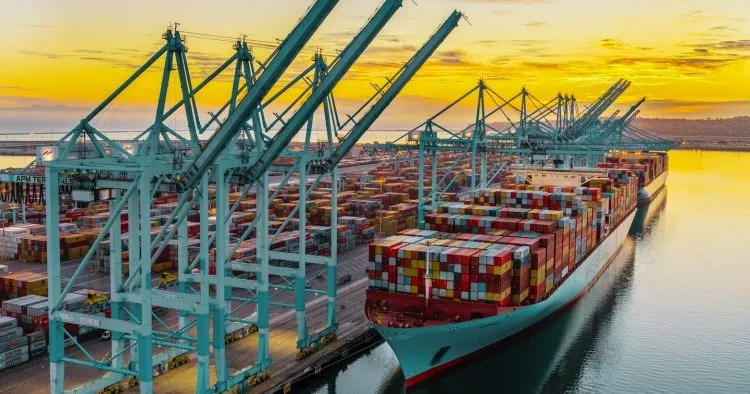Suez Canal Optimistic About Recovery as CMA CGM ‘Megaships’ Return
The Suez Canal Authority (SCA) is optimistic that shipping traffic is slowly recovering after three giant CMA CGM container ships transited the canal in a week, signaling a return to stability in the Red Sea.

The Suez Canal Authority (SCA) is optimistic that transit traffic is gradually returning to normal, after the vital waterway saw three mega-container ships operated by CMA CGM in just one week.
The positive sign comes just a day after the UN Security Council voted overwhelmingly to extend sanctions against Yemen’s Houthi forces, who have carried out attacks on commercial vessels forcing them to avoid the Red Sea. The SCA now believes the situation is easing and large vessels are starting to return to the canal.
Return of the Giants
On 15 November, the Suez Canal celebrated a major operational milestone when the newly delivered CMA CGM Helium made its maiden voyage through the waterway. Delivered by South Korean shipyard HD Hyundai Samho last month, the 335-metre, 130,000-tonne gross tonnage vessel is part of a series of 12 new dual-fuel container ships being built by CMA CGM – the world’s third-largest container shipping company. The ship transited the canal as part of a northbound convoy, en route from Singapore and calling at the Egyptian port of Alexandria.
Another CMA CGM container ship, the Jules Verne, also transited the waterway as part of a northbound convoy from Singapore to Lebanon after safely passing through the Red Sea and the Bab El-Mandab Strait. This came after Houthi forces pledged to stop attacks on shipping following a ceasefire between Israel and Hamas.
Built in 2013, the 396-meter, 176,000-ton vessel’s transit was the first transit from the south through the Bab El-Mandab, and its third transit through the canal this year. The SCA noted that the Jules Verne is resuming sailings after its last two southbound voyages in June and September this year, with the transit decision being prompted by incentives introduced in June.
The SCA then introduced a 15% discount on canal tolls for container vessels with a net tonnage exceeding 130,000 tonnes to encourage shipping lines to resume operations through the waterway.
The Helium and Jules Verne’s transit through the canal comes just a week after another CMA CGM container ship, the Benjamin Franklin, became the largest container ship to transit the canal in two years. The 399-metre vessel, with a deadweight of 177,000 tonnes and a capacity of 17,859 TEUs, transited the waterway as part of a northern convoy from the UK to Malaysia, before safely passing through the Bab el-Mandeb Strait.
Message from the SCA Leadership
Commenting on these positive developments, Admiral Ossama Rabie, Chairman of the SCA, said: “The return of calm to the Red Sea region will impose a new reality on the shipping community; namely the need for shipping lines to seriously consider revising their schedules to return to transiting the Bab el-Mandab and the Suez Canal once again.”
Revenue Outlook and Political Landscape
The SCA believes that the gradual return of transits through the Suez Canal – which before the Houthi attacks was one of the world’s busiest waterways with around 12% of global trade passing through – will lead to improved revenues, which it forecasts will generate $4.2 billion by 2025, up from $3.9 billion last year. However, this figure is still far from the record $10.2 billion the canal is expected to achieve in 2023.
To meet its revenue targets, the SCA is hoping that the current calm in the Red Sea will be maintained. As part of measures to further weaken the Houthi forces in Yemen, the Security Council agreed to extend sanctions on the armed group for another year until November 14, 2026. The resolution to extend the sanctions received 13 votes in favor, with Russia and China abstaining.
Source: Phaata.com (According to Maritime-Executive)






